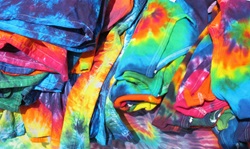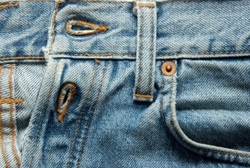In the world of fast fashion when time to market is paramount, garment dyeing post make up is increasingly adopted by manufacturers.
Apparel dyeing has implications for the finished quality of the garments and this bulletin explains how to minimise the negative impact of this process on general seam appearance and sewing related issues. We explain the dos and don'ts of sewing post dyed garments.
Why Garment Dyeing?
Generally, apparel is constructed from fabrics that are pre-dyed (piece dyed) before the actual cutting and sewing. The colour and quantity are committed to at the fabric dyeing stage with resultant long lead times to market and less forecast accuracy.
For seasonal fashion colours it is possible to react much closer to actual market demand if the apparel is post dyed. This involves the production of garments from undyed fabric and components and subsequently dyeing them in the required quantities.

Post dyeing has many advantages:
- Simple one shade production
- Stock reduction - finished goods and trimmings
- Allowance for specialised finishes, which are applicable to the whole garment. i.e., tie dye, spray dye, dip dye and pigment dye

What are the negatives of Post-dyeing Garments?
Not suited to all fabrics
- On densely woven lightweight fabrics there is a high risk of seam pucker if cotton sewing threads are used of relatively high grist to achieve adequate seam strength. 100% cotton fabrics are low in elongation and therefore the fabric yarns are displaced around the needle and thread increasing the degree of seam pucker
- On lightweight fabrics that require fine ticket sizes of thread, seam strength can be compromised
- Fabrics with high stretch properties, such as those containing Lycra can give problems with seam extension due to the low elongation properties of 100% cotton sewing threads
Not always providing the desired final appearance
- Garments that follow the post dye route have a "casual / washed down" appearance. Where a pristine finished look is required the post dye route is not recommended
- When manufacturing intimate apparel, the desired softness of the seam that is provided by textured sewing threads is not achievable with 100% cotton sewing threads

Potentially high damage and repairs rate
- Post dyeing is a relatively harsh process that can result in damage to the garments
- When making garments in the "greige" state needle and / or feed dog damage is not always evident. The garment dye process can expose these small levels of damage resulting in a high level of seconds
High risk of inappropriate sewing thread use
- It is imperative when embarking on a garment dye program that ALL of the previously used sewing threads are cleared from the sewing machines and the thread storage areas, and that ALL sewing threads are segregated and clearly marked
- Past experience has shown that on numerous occasions, failure to remove the residual thread from ALL lockstitch, stitch type bobbins on the sewing line (including the bobbins in the machine drawers etc.), has resulted in large quantities of garments being produced which are not saleable or repairable due to even the slightest contamination of the seams
No guarantees of absolute compatibility even in apparently ideal situations – fabric shrinkage
- Fabric shrinkage is often higher than the minimal amount of shrinkage in the sewing threads. This can result in a high degree of seam pucker. This seam pucker is often perceived as excessive thread shrinkage
Fabric swelling
- The fabric shrinkage levels (x and y) may well be low in percentage terms but in the third (z) dimension, the fabrics construction yarns may volumise significantly resulting in there being insufficient sewing thread in the seam causing poor seam extensibility and seam pucker in the woven fabric
Choosing Sewing Threads
For the best results in terms of colour uptake, the sewing thread to be used on post dyed garments should be in the same fibre as the fabric.